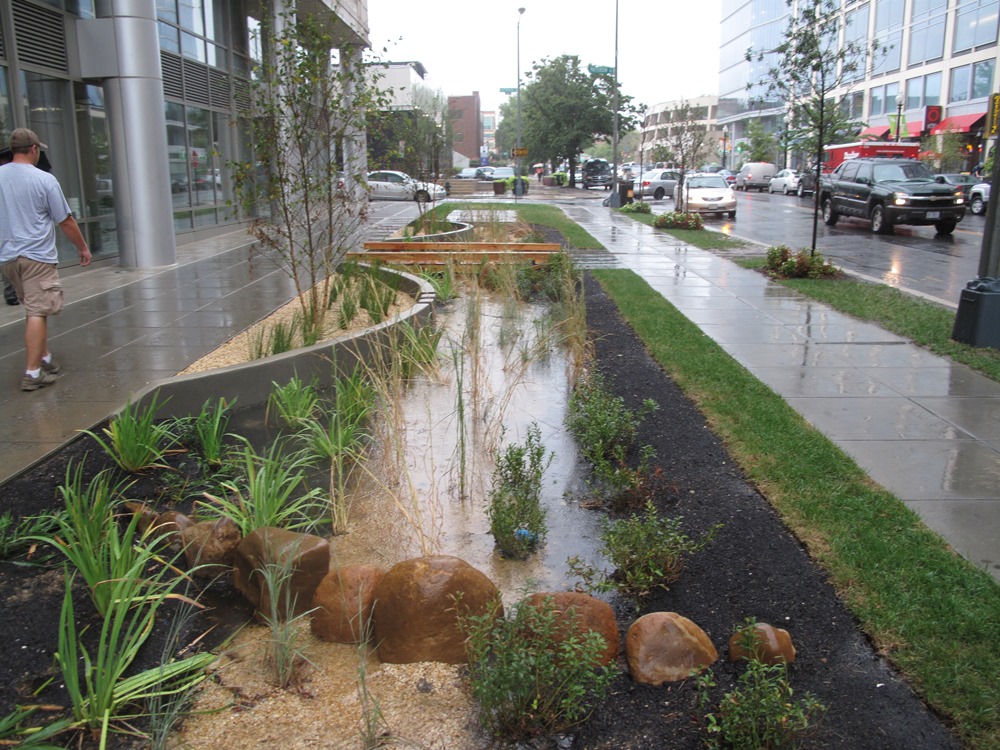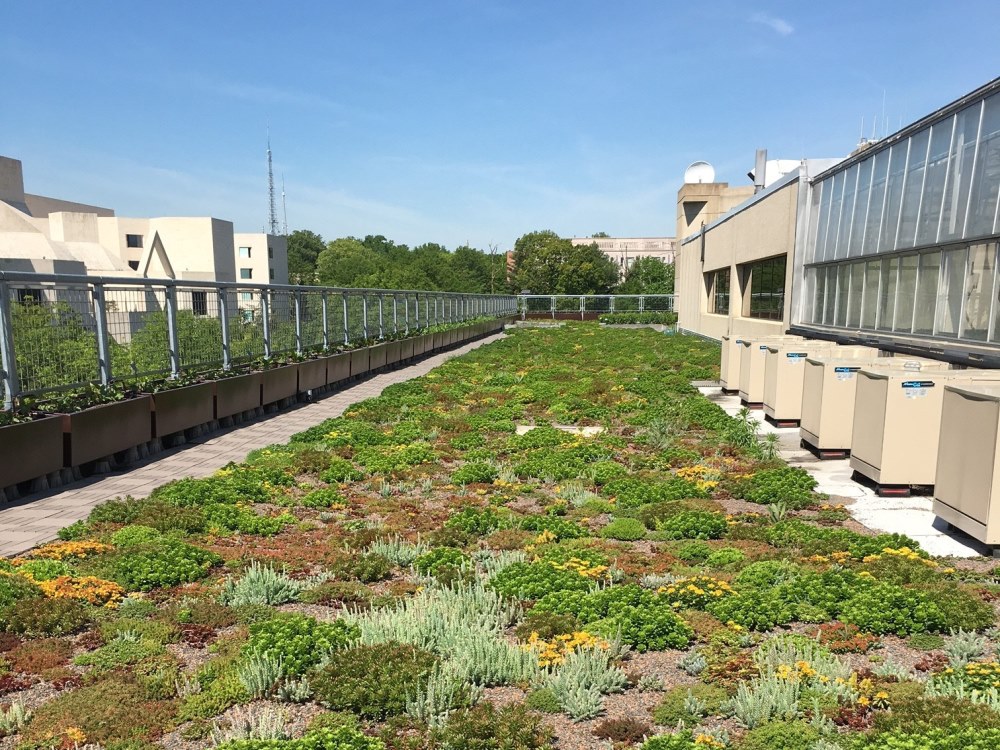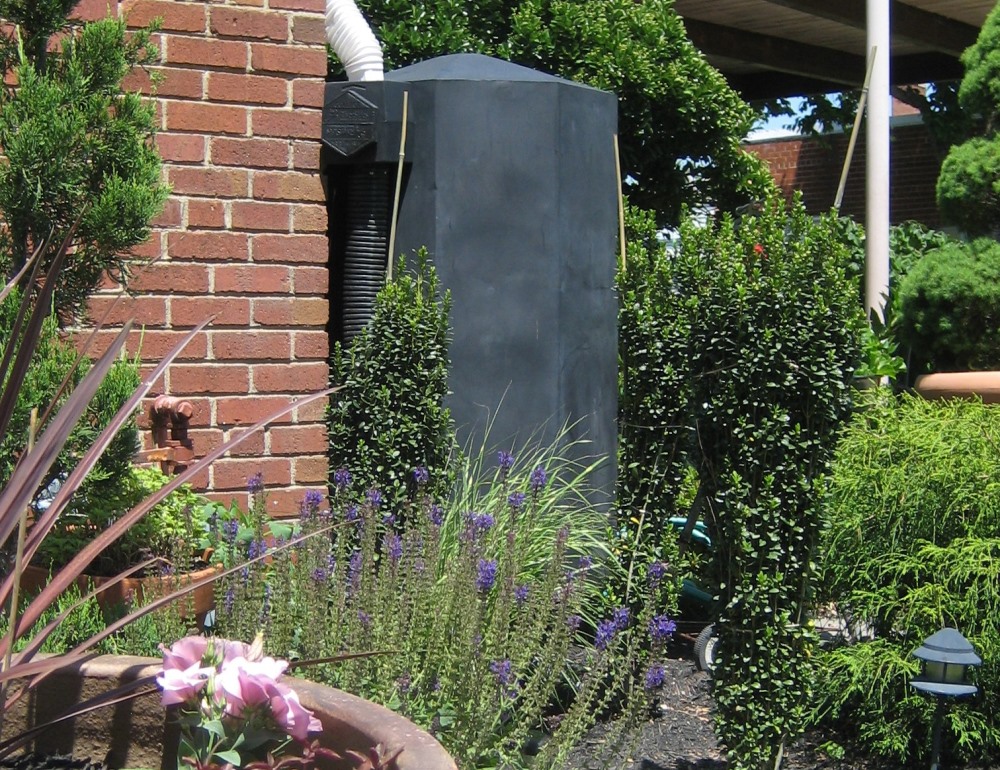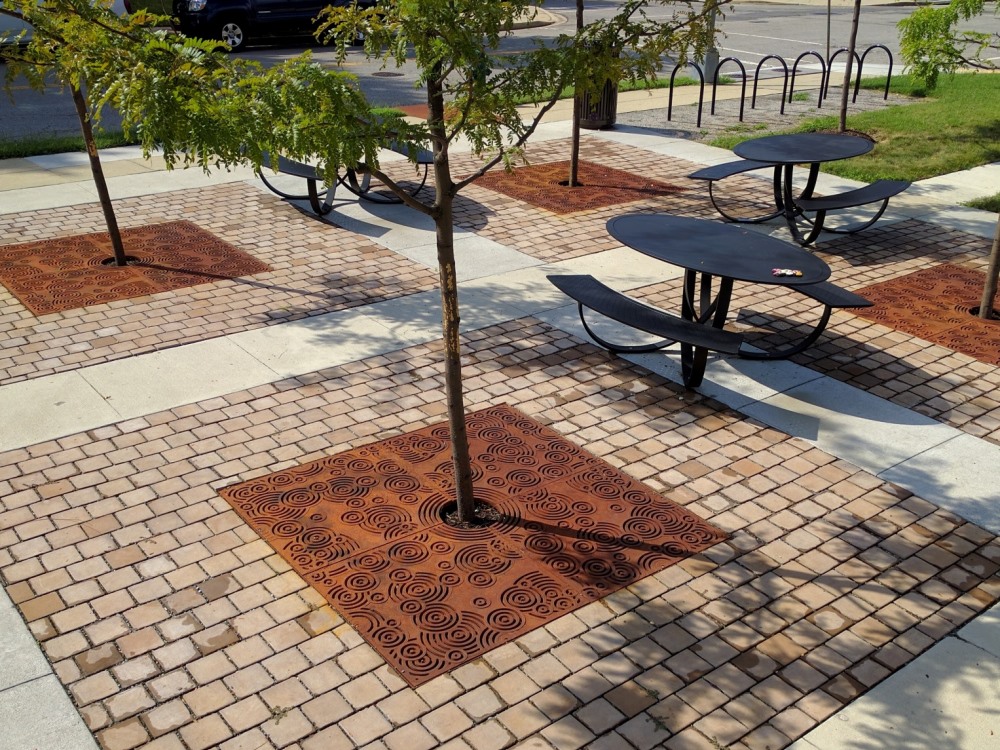There are many types of green infrastructure (GI) that reduce the harmful impacts of stormwater runoff. Many common GI types are shown on this page. You can switch between GI types by clicking the left or right arrows (in the picture).
For more information on the maintenance of green infrastructure practices in the District, refer to Green Infrastructure Maintenance.

Bioretention (rain gardens)
Bioretention systems capture and store stormwater runoff and pass it through a filter bed of engineered soil media composed of sand, soil, and organic matter. Rain gardens are a common example of bioretention.

Green Roofs
Green roofs replace traditional roofing with a vegetated roof system. Green roofs are designed so that rain is absorbed by the plants and other growing media.

Rainwater Harvesting (cisterns and rain barrels)
Rainwater harvesting is the process of collecting rainwater from impervious surface for future use. Harvested rainwater is often used for irrigation and other non-potable purposes, such as for use in cooling towers or toilets. When rainwater is harvested, it is conveyed through gutters or downspouts into above- or below-ground storage tanks called rain barrels or cisterns.

Permeable Pavement
Permeable pavement, or pervious pavers, allows water to seep around and through paved surfaces and soak naturally into the ground. It is a self-draining system constructed with various layers of gravel, rocks, and a filtering layer or infiltration sump.





